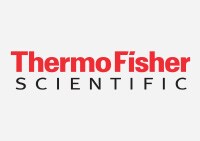Search Thermo Fisher Scientific

Microbiology Equipment
Microbiology equipment is designed to facilitate study of microorganisms such as bacteria, viruses, and fungi. A wide range of products are available for use in various procedures and applications, including microbiology environmental systems, microarray scanners, and other equipment and accessories.
Products (29)
Learn More (56)
Documents & Support
(6)29 Products
Filter
The Applied Biosystems™ GeneChip Scanner 3000 7G is an extension of the GeneChip Scanner 3000 (GCS 3000) series that allows you to scan next-generation higher-density arrays, including SNP arrays with up to 900,000 SNPs, tiling arrays for transcription and all-exon arrays for whole-genome analysis.
Mitsubishi™ AnaeroPack-CO2 is used for cultivation of CO2 dependent microorganisms such as Haemophilus and Neisseria spp.
Mitsubishi™ AnaeroPouch-Anaero is used for cultivation of anaerobic microorganisms without the addition of water or use of a catalyst.
Mitsubishi™ AnaeroPouch-MicroAero Gas Generator is used for cultivation of microaerophilic microorganisms such as Campylobacter jejuni and Helicobacter pylori without the addition of water.
Mitsubishi™ RT Anaero-Indicator is a single-use disposable means of detecting an anaerobic atmosphere.
Mitsubishi™ AnaeroPack 0.4L Rectangular Jar is an anaerobic jar with easy-close lid.
Mitsubishi™ AnaeroPack 2.5L Rectangular Jar is an anaerobic jar with easy-close lid.
Learn More (56)
View all
Exploreproducts Adult beverage testing Services and support, You need complete confidence in the data you obtain to protect your consumer's health and ensure loyalty with your brand. At Thermo Fisher Scientific, we enable QC teams to provide the highest quality output, protect against customer...
Designed with veterinary laboratories in mind, Thermo Scientific™ Veterinary Microbiology Solutions include a complete range of high quality culture media, identification and susceptibility testing products, and automated Johne’s Disease instrumentation and reagents.
Documents & Support (6)
View all
What are the differences in Biosafety Levels (BSL) 1 through 4?
Quality control needs to move beyond the standard











